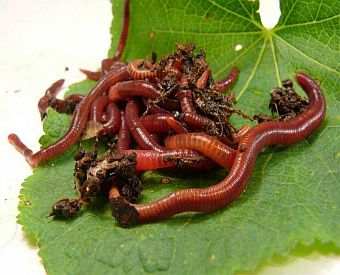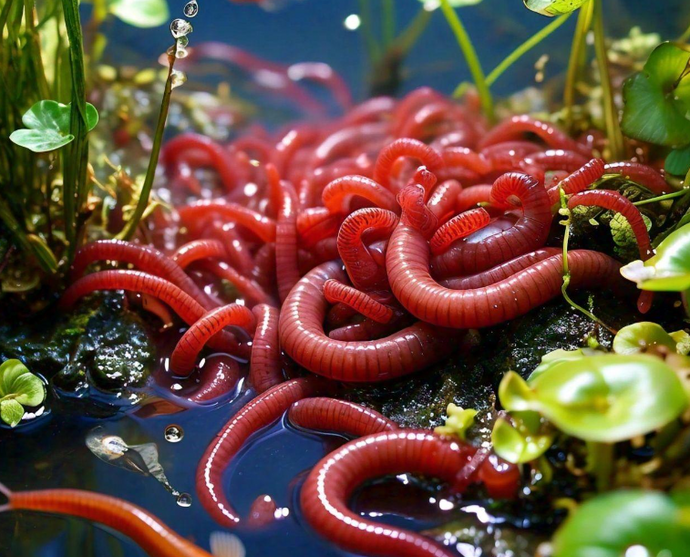Great starter red wigglers: For indoor setups
Great starter red wigglers: For indoor setups
Blog Article
The Function of Red Wigglers in Sustainable Gardening
The integration of red wigglers into lasting gardening methods offers a compelling method to enhancing soil health and wellness and decreasing natural waste. These organisms not only transform kitchen scraps into nutrient-dense garden compost via vermicomposting yet likewise freshen the soil, promoting optimum problems for plant growth. As they break down complicated natural products, they proactively cultivate a thriving microbial ecosystem vital for lasting agriculture. The ramifications of using red wigglers expand past mere composting; their role in forming a more sustainable future warrants a deeper expedition of their advantages and useful applications.
Recognizing Red Wigglers
Red wigglers, medically called Eisenia fetida, are a types of earthworm renowned for their duty in sustainable horticulture and composting methods - red wigglers. These worms flourish in breaking down raw material, making them particularly effective in transforming kitchen area scraps and lawn waste right into nutrient-rich compost. Unlike typical earthworms, red wigglers have a higher resistance for differing wetness levels and can grow in environments with plentiful natural product
(Lenoir Worm Farms)Classically, red wigglers are smaller sized than their earthworm equivalents, normally determining between 3 to 4 inches in size. They have a reddish-brown coloration and have a segmented body structure that aids in their burrowing and feeding activities. These microorganisms are hermaphroditic, meaning each specific possesses both male and female reproductive body organs, which enables effective population development under optimal problems.
The habitat preferences of red wigglers include moist, dark settings rich in organic material, such as garden compost containers or worm ranches. Their ecological function prolongs past composting; they are indispensable in freshening the dirt and helping with nutrition biking, which eventually adds to much healthier yard communities. red wigglers. Understanding the biology and behavior of red wigglers is vital for those seeking to execute efficient vermicomposting in sustainable gardening
Advantages of Vermicomposting
Vermicomposting deals countless advantages that enhance lasting gardening methods and add to ecological health and wellness. One of the key advantages is the improvement of natural waste right into nutrient-rich compost, which enhances soil structure and fertility. The castings produced by red wigglers are packed with helpful microorganisms and necessary nutrients, making them a superb all-natural fertilizer.
Additionally, vermicomposting considerably minimizes land fill waste. By diverting kitchen area scraps and backyard waste from land fills, this practice not just lessens methane discharges-- a potent greenhouse gas-- yet also advertises a round economic climate, where waste is repurposed as a source.
An additional advantage is the enhancement of soil aeration and drain (red wigglers). The burrowing task of red wigglers develops networks in the dirt, allowing air and water to permeate more conveniently, thus cultivating a healthier origin system for plants
Furthermore, vermicomposting can be done on a small range, making it easily accessible for city gardeners and those with minimal area. This method urges ecological stewardship and awareness, as people become a lot more engaged with their waste administration methods. Eventually, vermicomposting stands for a sustainable, efficient, and environmentally friendly technique to horticulture find more that benefits both plants and the world.
Exactly How to Begin Vermicomposting
Starting your own vermicomposting system can be a gratifying venture that enhances your lasting horticulture methods. To begin, choose an appropriate container, such as a plastic container or wooden box, with great drainage and ventilation. The dimension will certainly depend upon the volume of cooking area scraps you produce; a bin of 10-14 gallons generally suffices for a home.
Following, prepare the bed linens product. Shredded newspaper, cardboard, and coconut coir are superb options, giving a comfortable environment for the red wigglers. Go for a bedding deepness of regarding 4-6 inches, which must be damp but not soaked.
Once the bed linen is developed, present your worms. Red wigglers (Eisenia fetida) are the most ideal for composting. Begin with about one extra pound of worms for every 2-3 pounds of cooking area scraps weekly.
Begin including kitchen waste, staying clear of meat, dairy, and oily foods, as these can bring in parasites and produce smells. Consistently keep an eye on the container's wetness degrees and temperature, ensuring it stays within the ideal array for worm task. With these initial steps, you'll be well on your method to developing nutrient-rich compost for your garden.
Preserving a Healthy Worm Container
A thriving worm bin calls for regular care and interest to maintain an ideal atmosphere for the red wigglers. Key aspects to check consist of dampness degrees, temperature, and food supply. Maintaining a wetness level comparable to a wrung-out sponge is crucial; excessive water can result in anaerobic conditions, while inadequate can dehydrate the worms.
Temperature level is likewise essential, as red wigglers thrive in a variety of 55 to 77 degrees Fahrenheit. Extreme temperature levels can emphasize the worms, potentially causing mortality. For that reason, positioning the container in a climate-controlled area or making use of shielding materials can aid regulate temperature level fluctuations.

Finally, aeration is important. Consistently transforming the bed linen and utilizing a fork or shovel can avoid compaction and promote air movement, guaranteeing a healthy and balanced, growing environment for the red wigglers. By sticking to these methods, garden enthusiasts can maintain an efficient worm bin that sustains lasting gardening efforts.
Influence On Soil Wellness
Enhancing soil health and wellness via the use of red wigglers is an essential aspect of sustainable gardening. By consuming organic matter, red wigglers break down complicated products right into simpler substances, a process recognized as vermicomposting.

(Lenoir Worm Farms)Studies have actually shown that soils enhanced with worm spreadings exhibit enhanced microbial task and boosted fertility, resulting in greater plant returns. By including red wigglers into gardening methods, garden enthusiasts not just enrich their soil however additionally add to a more sustainable agricultural system, highlighting the interconnectedness of dirt wellness and environmental stewardship.

Final Thought
In final thought, red wigglers considerably contribute to lasting gardening through their reliable vermicomposting practices. By promoting waste decrease and promoting a round economic situation, red wigglers emerge as essential parts in environment-friendly gardening campaigns, highlighting their vital function in environmental sustainability.
Report this page